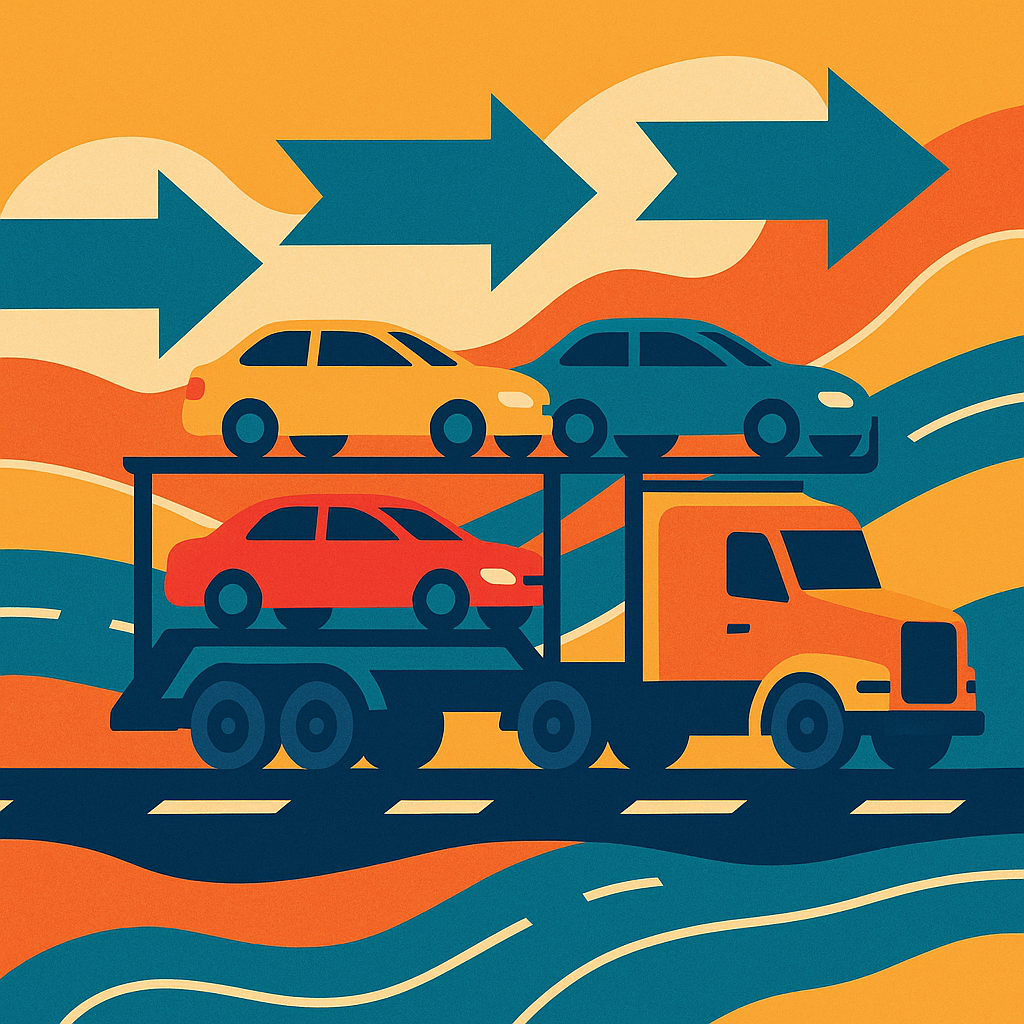Moving a vehicle across state lines is something thousands of people do every week, yet it can still feel confusing if you’ve never booked a carrier before. The process is fairly consistent whether you’re sending a car across one state border or coast to coast. In this guide, I’ll break down how nationwide auto transport usually works, give a step-by-step outline, and point out the mistakes I’ve seen customers make most often so you can avoid them.
Step-by-step car shipping guide
Shipping a car is not complicated once you understand the sequence. It comes down to booking, preparing, pickup, transit, and delivery. Each stage has its own details, and knowing them ahead of time keeps the whole job running smoothly. Here’s how it usually looks.
Interstate auto transport process
Step one: collect information and request quotes. The carrier or broker will need the year, make, model, trim, and condition of the vehicle. They’ll also ask for pickup and delivery addresses, whether the car runs, and if there are any access restrictions like gated entries or narrow roads. Once that’s provided, you’ll receive quotes. Be cautious of offers far below the average because they may delay your pickup. For a sense of typical pricing, review Car shipping costs.
Step two: book and confirm dates. After selecting a company, you’ll lock in service. Most dispatchers provide a pickup window of one or two days rather than an exact appointment. Delivery windows vary depending on distance. Confirm the payment terms as well—some carriers collect part upfront and the rest upon delivery.
Step three: prepare the vehicle. Wash the exterior so inspection notes are accurate. Remove personal belongings, since carriers are not responsible for them. Keep the fuel tank below a quarter, and check the battery and tires. Photograph the car from multiple angles for your records. For a deeper checklist, see How to ship a car.
Step four: pickup inspection. On the day of pickup, the driver will walk around the vehicle with you, marking any existing damage on a condition report. This document is crucial for insurance purposes. You’ll both sign it, and then the car is loaded onto the trailer and secured.
Step five: delivery and final inspection. When the truck arrives at the destination, you or your representative will inspect the vehicle again. Compare the condition to the original report, note anything new, and only then sign off. If payment is due on delivery, have it ready so the driver can move on to their next stop.
State-to-state moving tips
Be flexible with timing. Drivers manage multiple vehicles on each trip, and schedules shift with traffic and weather. Accepting a pickup or delivery window instead of a fixed time helps avoid frustration. Keep your phone on and voicemail clear so the driver can reach you quickly with updates.
Plan for access limitations. Big trailers can’t always fit on tight neighborhood roads. If you live in an area with restrictions, arrange a nearby meeting spot such as a wide street or parking lot. Having this ready before the truck arrives saves everyone stress and keeps the schedule intact.
Use door-to-door when convenience matters most. Terminal service can cut costs, but it often adds waiting time. If your schedule is strict, paying a little more for door-to-door usually makes life easier. Balancing budget and timing is part of making the right choice.
Common mistakes when shipping a car – FAQ
Do customers forget to prepare the car properly?
Yes. Personal items left inside often cause disputes. Carriers are not insured for belongings, so emptying the car is essential.
Is waiting until the last minute a mistake?
It is. Trucks fill up quickly, especially in summer and around holidays. Booking at least a week or two in advance gives you better rates and more options.
What happens if someone skips the inspection?
That’s a major error. Without signed inspection forms and photos, it’s harder to file a claim if damage occurs. Walk around the car carefully at both pickup and delivery.
Is choosing the lowest quote always smart?
Not necessarily. A very low offer might sit unassigned on the dispatch board while other fairly priced loads move first. Paying a realistic rate usually gets the car moving faster.
Can enclosed shipping help?
It can. Enclosed trailers protect vehicles from weather and debris, but they cost more. For high-value or classic cars, many owners find the added protection worthwhile.
Should I trust driveaway instead of a carrier?
Driveaway may look cheap, but it adds mileage and road wear to the car. Carriers keep the odometer unchanged and provide stronger insurance. For long distances, carriers are the safer bet.
Nationwide auto transport doesn’t need to feel complicated. By preparing the car, booking early, and avoiding common mistakes, you’ll have a smoother experience. With the right company, the process is consistent whether you’re moving one state over or across the entire country.

